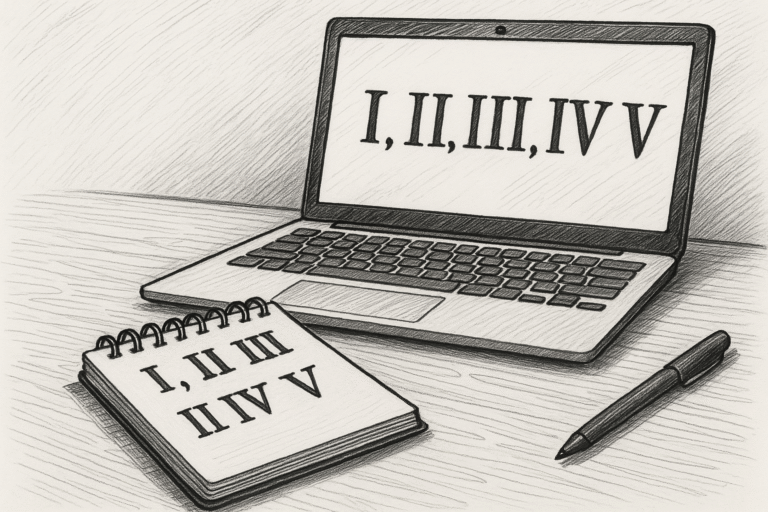What Countries Were Part of the Roman Empire? A Comprehensive Guide

The Roman Empire, one of history’s most expansive and influential civilizations, stretched across three continents at its peak, leaving a lasting legacy in culture, law, and architecture. Roman numerals, used in inscriptions, coins, and records, help historians map the empire’s vast reach and timeline, from its founding in CCLIII BC (753 BCE) to the fall of the Western Empire in CDLXXVI (476 CE). But which modern countries were part of this colossal empire?
Understanding the Roman Empire’s Expansion
The Roman Empire evolved from a small city-state in Rome, traditionally founded in CCLIII BC (753 BCE), into a vast empire by the reign of Emperor Trajan (XCVIII–CXVII, or 98–117 CE). At its height, it spanned approximately 5 million square kilometers, encompassing parts of Europe, Africa, and Asia. Roman numerals were critical in recording conquests, administrative divisions, and key dates, such as CXXI (121 CE) for the construction of Hadrian’s Wall.
The empire is often divided into:
- Western Roman Empire: Centered in Rome, covering Western Europe and North Africa, which fell in CDLXXVI (476 CE).
- Eastern Roman Empire (Byzantine Empire): Centered in Constantinople, lasting until MCDLIII (1453 CE).
This article focuses on the modern countries that corresponded to Roman territories, primarily during the empire’s peak under Trajan.
Modern Countries in the Roman Empire
The Roman Empire included regions that today form parts of over 40 modern countries. Below, we list these countries, grouped by continent, with historical context and examples of Roman numeral usage in their records. Note that borders have shifted since antiquity, so some countries were partially or fully under Roman control.
Europe: The Heart of the Empire
Europe was the core of the Roman Empire, with Rome as its capital. The following modern countries were wholly or partially under Roman rule:
- Italy:
- The heart of the empire, home to Rome and key cities like Pompeii and Ravenna.
- Roman numerals marked milestones, such as LXXIX (79 CE) for the eruption of Vesuvius, which buried Pompeii.
- Spain:
- Known as Hispania, fully conquered by XIX BC (19 BCE) under Augustus.
- Numerals appear in inscriptions, like CCXII BC (212 BCE) for early campaigns during the Second Punic War.
- France:
- Gaul, conquered by Julius Caesar between LVIII–L BC (58–50 BCE).
- Aqueducts like the Pont du Gard, dated around XIX BC, used numerals in construction records.
- United Kingdom:
- Britannia, partially conquered from XLIII (43 CE) under Claudius.
- Hadrian’s Wall, built in CXXI (121 CE), features numeral-inscribed stones marking construction phases.
- Germany:
- Partially controlled as Germania, up to the Rhine River, with campaigns like the Battle of Teutoburg Forest in IX (9 CE).
- Numerals marked military forts, such as XV (15 CE) for Roman outposts.
- Portugal:
- Part of Hispania Lusitania, annexed by XIX BC (19 BCE).
- Inscriptions on bridges, like the Aqueduto dos Pegões, include numerals from the Roman period.
- Belgium:
- Part of Gallia Belgica, incorporated by L BC (50 BCE).
- Numerals in administrative records tracked taxes and garrisons.
- Netherlands:
- Partially controlled as part of Germania Inferior, up to the Rhine.
- Forts dated with numerals like XIX (19 CE) mark Roman presence.
- Switzerland:
- Part of Raetia, annexed by XV BC (15 BCE).
- Numerals in inscriptions, such as C (100) for milestones, denote distances.
- Austria:
- Part of Noricum and Pannonia, conquered by XV BC (15 BCE).
- Numerals on tombstones, like LXX (70 CE), commemorate legionaries.
- Hungary:
- Part of Pannonia, annexed by IX (9 CE).
- Aquincum’s ruins feature numerals in inscriptions, such as CVI (106 CE).
- Croatia:
- Part of Illyricum and Dalmatia, fully controlled by IX (9 CE).
- The Diocletian’s Palace in Split, built around CCXCV (295 CE), includes numeral-marked stones.
- Serbia:
- Part of Moesia, conquered by XXIX BC (29 BCE).
- Numerals in inscriptions, like LXXV (75 CE), mark military victories.
- Bosnia and Herzegovina:
- Partially included in Dalmatia, under Roman control by IX (9 CE).
- Numerals in administrative records tracked regional governance.
- Slovenia:
- Part of Pannonia and Noricum, annexed by XV BC (15 BCE).
- Numerals on milestones, such as L (50), indicate distances.
- Albania:
- Part of Illyricum, incorporated by IX (9 CE).
- Numerals in inscriptions, like CC (200 CE), mark public works.
- Montenegro:
- Part of Dalmatia, under Roman control by IX (9 CE).
- Numerals in coastal ruins denote construction dates.
- North Macedonia:
- Part of Macedonia, annexed by CXLVI BC (146 BCE).
- Numerals in inscriptions, like CL (150 CE), mark temples.
- Greece:
- Achaea, fully incorporated by CXLVI BC (146 BCE) after the Battle of Corinth.
- Numerals on monuments, such as XXVII BC (27 BCE), mark Roman rule.
- Bulgaria:
- Part of Thrace and Moesia, conquered by XXIX BC (29 BCE).
- Numerals in fort inscriptions, like CIII (103 CE), denote Trajan’s campaigns.
- Romania:
- Dacia, conquered by Trajan in CVI (106 CE).
- Trajan’s Bridge, built in CV (105 CE), features numeral inscriptions.
- Slovakia:
- Partially included in Pannonia, up to the Danube, by X (10 CE).
- Numerals in military records track frontier defenses.
- Czech Republic:
- Partially controlled as part of Germania, with outposts dated to IX (9 CE).
- Numerals in rare inscriptions mark temporary camps.
- Luxembourg:
- Part of Gallia Belgica, under Roman control by L BC (50 BCE).
- Numerals in administrative records denote regional taxes.
- Malta:
- Annexed by CCXVIII BC (218 BCE) during the Second Punic War.
- Numerals in temple inscriptions mark Roman presence.
Africa: The Breadbasket of Rome
North Africa was vital for its grain and resources, with several modern countries under Roman control:
- Egypt:
- Annexed in XXX BC (30 BCE) after Cleopatra’s defeat.
- Numerals in papyri, like XL (40 CE), record grain shipments.
- Libya:
- Part of Cyrenaica and Africa Proconsularis, controlled by XCVI BC (96 BCE).
- Numerals on amphitheaters, like CLXXX (180 CE), mark construction.
- Tunisia:
- Africa Proconsularis, including Carthage, annexed by CXLVI BC (146 BCE).
- Numerals in mosaics, such as CC (200 CE), denote public buildings.
- Algeria:
- Part of Numidia and Mauretania, incorporated by XL BC (40 BCE).
- Numerals on arches, like CXL (140 CE), commemorate emperors.
- Morocco:
- Mauretania Tingitana, partially controlled by XLII (42 CE).
- Numerals in inscriptions, such as CL (150 CE), mark coastal forts.
Asia: The Eastern Frontier
The Roman Empire extended into parts of the Middle East and Asia Minor:
- Turkey:
- Asia Minor (e.g., Asia, Bithynia, Cappadocia), fully controlled by CXXXIII BC (133 BCE).
- Numerals on structures like the Library of Celsus (CXXXV, 135 CE) denote completion.
- Syria:
- Annexed in LXIV BC (64 BCE) by Pompey.
- Numerals in inscriptions, like CXV (115 CE), mark Trajan’s campaigns.
- Lebanon:
- Part of Syria, under Roman control by LXIV BC (64 BCE).
- Numerals on Baalbek temples, like CLX (160 CE), indicate construction.
- Israel:
- Judea, fully annexed by VI (6 CE).
- Numerals in records, like LXX (70 CE), mark the destruction of the Second Temple.
- Palestine:
- Part of Judea, controlled by VI (6 CE).
- Numerals in inscriptions track Roman governance.
- Jordan:
- Part of Arabia Petraea, annexed in CVI (106 CE).
- Numerals on Petra’s ruins, like CXXX (130 CE), denote Roman influence.
- Cyprus:
- Annexed in LVIII BC (58 BCE).
- Numerals in mosaics, like CC (200 CE), mark villas.
- Iraq:
- Mesopotamia, briefly held under Trajan (CXVI, 116 CE).
- Numerals in military records denote temporary control.
- Armenia:
- Partially controlled as a client state by CXIV (114 CE).
- Numerals in treaties mark Roman influence.
- Georgia:
- Partially included as a client state in Colchis, by LXVI (66 CE).
- Numerals in rare inscriptions denote trade agreements.
Roman Numerals in Territorial Records
Roman numerals were essential in documenting the empire’s territories:
- Inscriptions: Milestones along Roman roads, like C (100) for distances, marked territorial boundaries.
- Coins: Emperors like Trajan issued coins with numerals, such as CVI (106 CE), celebrating Dacian conquests.
- Administrative Records: Tax and census documents used numerals like M (1,000) to quantify populations or resources.
- Monuments: Arches and temples, dated with numerals like CXXI (121 CE), commemorated territorial expansions.
These records, preserved in stone and metal, help modern historians map the empire’s extent.
Examples of Numeral-Dated Conquests
Key conquests with Roman numeral dates include:
- CCLIII BC (753 BCE): Founding of Rome.
- CXLVI BC (146 BCE): Conquest of Greece and Carthage.
- XXX BC (30 BCE): Annexation of Egypt.
- CVI (106 CE): Conquest of Dacia (Romania).
These dates anchor the empire’s growth in historical records.
Why the Roman Empire’s Reach Matters Today
The Roman Empire’s territorial expanse influences modern culture:
- Legal Systems: Roman law, recorded with numerals, shapes modern legal codes.
- Architecture: Roman structures, like aqueducts in Portugal, inspire engineering.
- Languages: Latin, tied to numerals, influences Romance languages in countries like France and Spain.
- Numerals: Used today in book chapters (I, II) and dates (MMXXV, 2025).
Understanding the empire’s scope connects us to its enduring legacy.
Common Misconceptions
- Uniform Control: Not all territories were fully Romanized; some, like Germany, were partially controlled.
- Static Borders: The empire’s boundaries shifted, with Mesopotamia briefly held in CXVI (116 CE).
- Western Focus: The Eastern Empire included significant Asian territories, lasting until MCDLIII (1453 CE).
Tips for Studying the Roman Empire’s Territories
- Learn Roman Numerals: Decode dates like CVI (106 CE) to understand conquest timelines.
- Explore Maps: Study Roman Empire maps to visualize modern country overlaps.
- Visit Sites: See numeral-inscribed ruins in Italy, Spain, or Turkey.
- Use Conversion Tools: Verify dates (e.g., 146 BCE = CXLVI BC) with online converters.
- Read Primary Sources: Texts like Tacitus’ Annals, with numeral-dated events, provide context.
Conclusion
The Roman Empire, at its peak, encompassed over 40 modern countries across Europe, Africa, and Asia, from Italy (CCLIII BC, 753 BCE) to Dacia (CVI, 106 CE). Roman numerals, used in inscriptions, coins, and records, document this vast reach, marking key conquests and constructions. By understanding which countries were part of the empire and how numerals preserved this history, we gain insight into Rome’s global influence. Whether you’re studying ancient history, visiting Roman ruins, or decoding dates like CDLXXVI (476 CE), this knowledge enriches your appreciation of Rome’s legacy. Explore numeral-marked artifacts, practice conversions, and uncover the vast scope of the Roman Empire!





